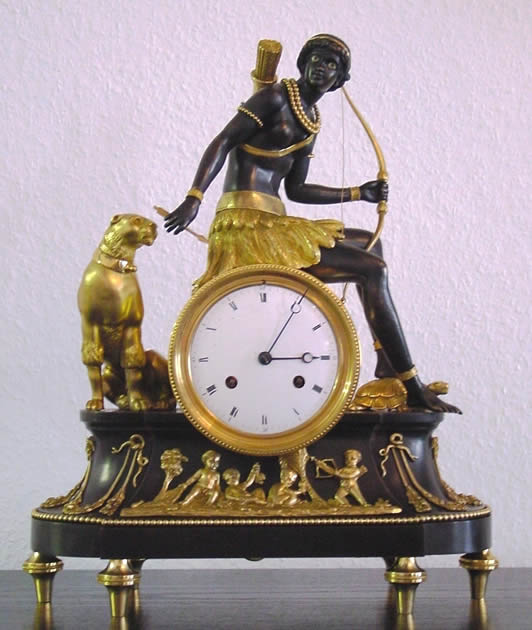Blackamoor
Coco Chanel with a pair of Blackamoor scuplture
If you are going to walk the walk, you should talk the talk.
What is a blackamoor?
BLACKAMOOR (RHYMES WITH AMATEUR AND CONNOISSEUR): A dark skinned figure, typically African, used as a decorative element in jewelry, sculpture, armor and decorative arts. Blackamoors have a long history stretching back to the 17th century. They are often displayed in pairs. Andrea Brustolon (1662–1732) was the most famous sculptor of blackamoors. Typically they are shown in positions that a real person could not hold at length.
Pair of Italian tables
Although controversial, many tastemakers have collected blackamoors in some form. Coco Chanel had a pair of Venetian pair in the foyer of her private apartment above her atelier.
The foyer of Chanel’s private apartment in Paris
Helena Rubenstein also collected them.
Diana Vreeland collected Blackamoor jewelry and famously said: “Have I ever showed you my little blackamoor heads from Cartier with their enameled turbans? I’m told it’s not in good taste to wear blackamoors anymore, but I think I’ll revive them.” Recently Dolce & Gabbana raised a firestorm by decking out its models in blackamoor jewelry in their S/S 2013 collection.
Cartier jewelry and model in the SS2013 Dolce & Gabbana show
Despite the controversy, the form persists. When it comes to decorative arts, it is most often seen as a small stand, as lamps or candlesticks, or on a clock.
Examples
c.1950
c.1920
20th century candlesticks
Reproduction clock in the Empire Style
While some consider the blackamoor to be chic, I would not use the motif. However, now that you know its many forms, you can decide how you feel about it.
Sconce in the home of John Lyle
Bust with Fez in a London home
Untitled (Small Blackamoor Plantstand), Magazine Interiors Series
24” x 20”, framed
Oil on panel
© 2007 Page Laughlin
Photo credits: Coco Chanel. Chanel foyer Vreeland quote. pair of tables. Jewelry collage: brooch, earrings,model Table c. 1950’s table lamps candlesticks clock John Lyle home from the New York Social Diary London home image from 2011 House and Garden. Painting












